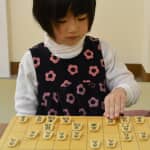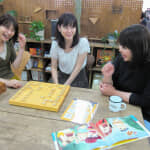Shogi 25 May 2017
Partial Piece Formations: Five Castles with Snappy Names
As you know, Shogi is a game that resembles a real battle. Two players cleverly develop their strategies through the beginning, the middle, and the ending game to capture opponent’s King, as if they were heads of a country and a castle in the turbulent age.
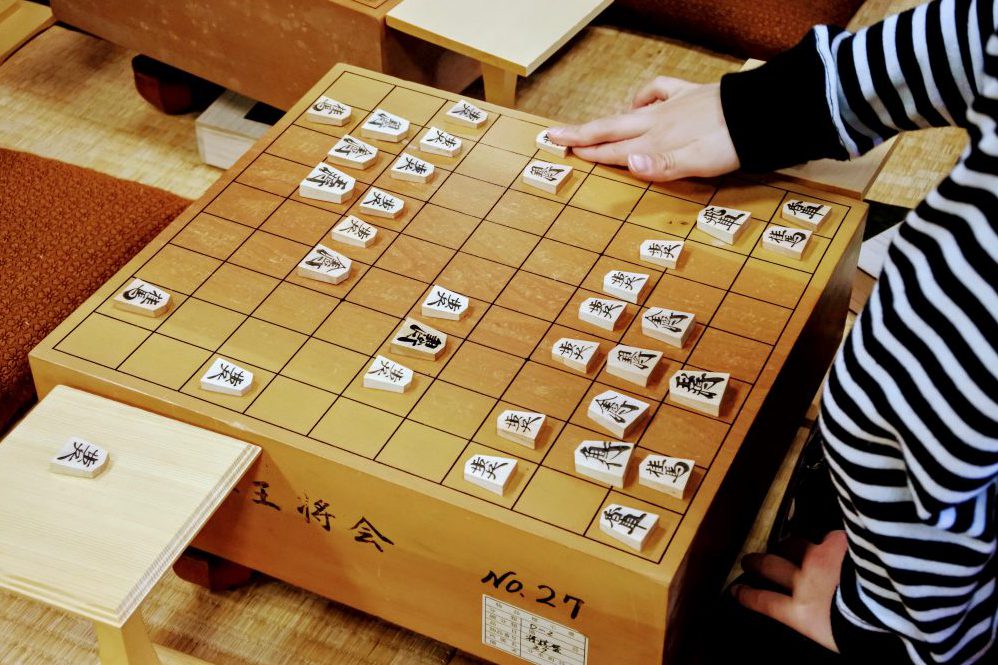
The most important stage throughout one Shogi game is the beginning. During this beginning stage, you may be busy to prepare for a battle, and at the same time to build a solid castle to protect your dear King. In Shogi game, this castle is named as “Kakoi”. Kakoi, a partial piece formation, represents as one of Shogi strategies in which you enclose your King with some pieces as a protection.
By the way, there are many castles in Japan with different appearances and various purposes. Himeji castle is known as a white Heron castle, whose appearance is shining white and graceful. Osaka castle has an impressive great main castle tower that shows Hideyoshi’s power in those days. Nagoya castle is famous for its gorgeous golden fish tiles on the top, Shachi Hoko. Shogi has equally several types of “Kakoi” as castles in order to protect a King with a variety of appearances, purposes, and names.
In this article, I would like to gather and introduce five Kakoi: ones with snappy and smart names in particular! (Just my taste, you may not be with me. If so, sorry!)
By the way, just because a strategy has snappy name doesn’t mean it will work effectively in a real game. Besides effectiveness and strength of strategies, smartness or coolness could be the new angel to view Shogi to make you feel more familiar with it.
1. Castle tower

Castle tower sounds very “Castle something”, doesn’t it? Since this is one type of Mino Kakoi, it is called as castle tower Mino, as well.
The main feature of castle tower Mino is the position of King. In ordinal Kakoi formations, King is at the first and the second ranks, but in this Kakoi King is placed at the third one. King indeed looks down his retainers from a castle tower, the higher position than others.
This strategy, castle tower Mino, is mainly used when a Hisha (Rook) stays on its original position under a strategy named “Ibisha”, or static Rook. On the right side of King, there are Kin (Gold) and Gin (Silver) and they make this formation stronger against the attack from the side. On the other hand, it is vulnerable to the vertical attack.
Even you made King come all the way to the higher position, you may feel insecure at knowing only several pieces of Fu (Pawn) are at the front line of defense.
2. Kin muso, or Peerless Gold
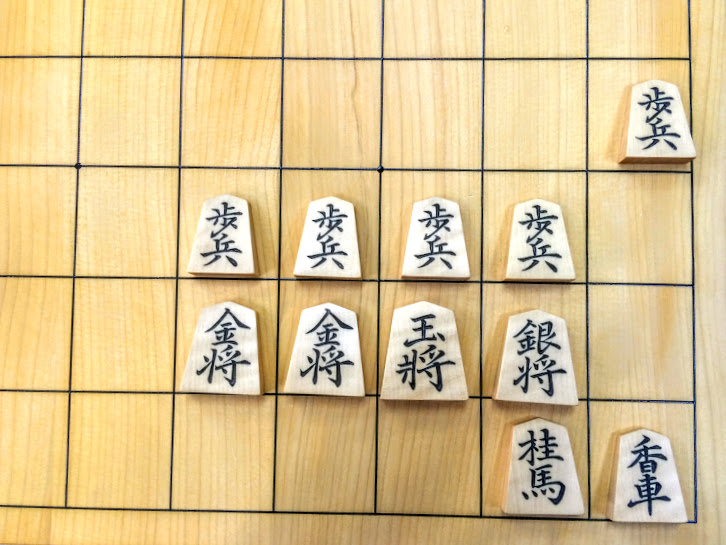
Kin muso sounds like a samurai warrior’s lethal art. Within this Kakoi, Kin muso or peerless Gold, two Gold will work very well. It was named after these two Golds’ exploits. Looking at the picture above, you may notice that two Golds are situated close to each other to give ample protection to their King
The feature of Kin muso is that two Golds are staying by their King and never leave it as I mentioned above. The positive points of this strategy are that since both side of King are occupied by Kin and Gin, it has resistance to the attack from the top and minimum piece movements will be only 5. On the contrary, its negative points are that King will lose the ways to escape from the side attackers and it can be only used when two players are adapting a strategy of Furibisha in which Rook moves along its initial rank left side over the fifth file.
Having teamwork of pieces is paramount in Shogi game. I know Gold piece is very trustworthy. Nevertheless, we shouldn’t count on Gold too much!
3. Millennium

Now, we are having a rather stylish name for classical Shogi, Millennium.
Why millennium? Since this strategy was invented in 2000, it was given a name of Millennium. Usually, we use three pieces of Gold and Silver, but for this Kakoi we use four pieces to build up a solid fort like a barricade. Therefore, it is also called Pillbox or Snow dome.
Millennium has very tough defense, so you can keep stamina for a while against fierce attacking. During the beginning of a game, it is said that you produce 30 movements of pieces. Out of these 30, you will need at least 15 movements to build up this Kakoi. Usually it is difficult to complete building up Millennium under the situation where you should deal with opponent’s attack. This is a kind of disadvantage of this Kakoi.
Millennium Kakoi has several code-names and is rarely seen. You may get to realize this strategy is befitting the 21th century.
4. Big 4
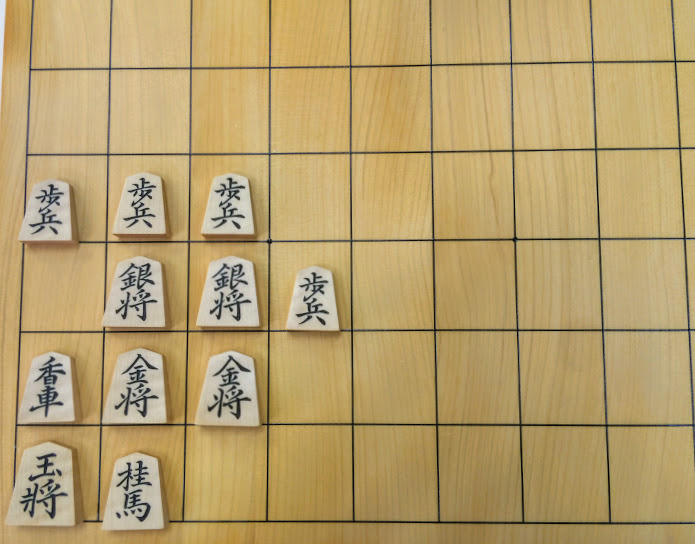
This name also sounds modern, right? With the above picture, you will know that the name, “Big 4”, refers to four pieces which are in King’s service to be placed around him: two pieces of Gold and two pieces of Silver.
The highlight of “Big 4” is the tenacity of its defense ability. It is more powerful than that of Millennium. Normally, if you want to capture the opponent’s King, you need to attack the area around the King, G-8h with an above picture on particular. When you target the G-8h, you need to beat three pieces of Gold and Silver around the G-8h. It must be very tough to break the Kakoi in which Big 4 join forces with each other, even though you use all your abilities in launching a full-scale attack on it.
By the way, Big 4, so called the most powerful Kakoi, has a disadvantage as well as Millennium. To establish this defensive facility is very hassle, and it requires you to make at least 19 piece-movements. Indeed, it must be a quite challenge to gather Big 4 all together, being as difficult as the case of Summit conference!
5. Silver crown

This Kakoi is not gorgeous like Kakoi in Section 1 or 2, nor has a trendy name like ones in 3 or 4. However, it could be said that “Silver crown” is what is called as a top star among the Shogi world.
The criteria to evaluate Kakoi functions has major two points: solidness and largeness. Solidness means how solid the King is protected. Largeness indicates how much the escape route for the King is provided. In the case of Silver crown, three pieces of Gold and Silver are protecting the King firmly and there is a sufficient escape way for the King.
Moreover, “Silver crown” is an advanced Kakoi, which evolved from “Castle Tower Mino”. So, it doesn’t require you to make many movements that can’t be realized. Also, it can be applied for any situations where you and/or your opponent have strategies of Static Rook and Swinging Rook. “Silver crown” is a Kakoi that has versatility.
To be sure, it is the case for a certain Japanese idol. Rather some girls who are friendly and common type are more popular than those who look like jazzy celebrities.
Do you like today’s article about Kakoi with snappy names? As may be expected of a time-honored game, Shogi have had various Kakoi from classy to modern.
In this article, I am telling about existing five Kakoi, but there are more. You want to create your original Kakoi. It sounds fun, doesn’t it?
Why don’t you try it?
We are offering other articles to evoke your interests in Shogi.

